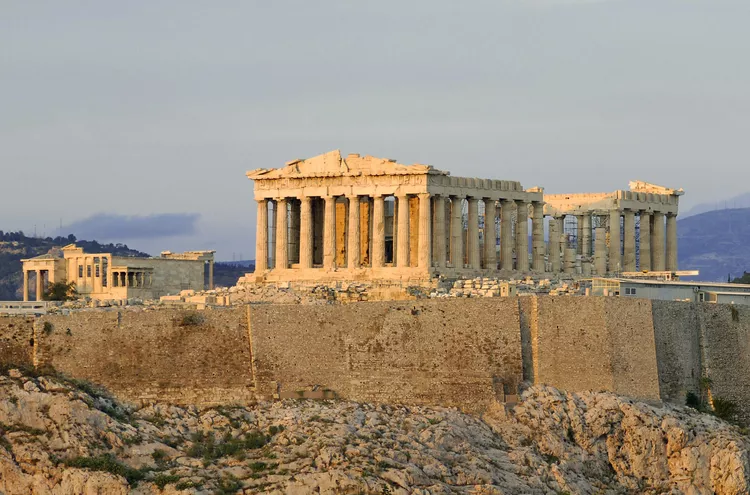Historic Architecture is more than just bricks and decorations; they are living archives of how communities changed throughout time in response to climate, culture, materials, and technology. We maintain identity and memory, keep embodied carbon in situ, and pass on useful information about how to build properly when we preserve them. Today, preservation also involves digital conservation, which uses high-fidelity 3D scans and immersive stories to make sites that are in danger of being lost available to everyone. Heritage on the Edge and Open Heritage are two examples of how Google Arts & Culture uses technology to document, interpret, and share sites throughout the world that are at risk.
Cultural Identity & Sense of Place
Every ancient facade, courtyard, or mosque minaret shows the values and skills of the people who built it. Keeping these locations alive helps people feel proud of their hometown and keeps things the same, giving fast-changing towns a real sense of place. Digital collections make some stories even better: Heritage on the Edge has people from all around the world, from Bangladesh’s Mosque City of Bagerhat to Peru’s Chan Chan, talking about why these sites are important and how they are dealing with environmental problems. This community-based approach changes the way we think about conservation from a technical task to a shared, living practice.
Education, Research & Open Access
Architects, engineers, craftspeople, and the public can learn in historic structures. With the Open Heritage project, high-resolution 3D models and field “notes” turn complex conservation work into accessible learning resources: from emergency documentation after the 2017 Mexico City earthquake to digitizing Myanmar’s Bagan sites destroyed by the 2016 disaster. Students can turn artefacts, “walk” through buildings, and look at details that are otherwise dangerous or hard to reach. This makes knowledge more accessible and encourages the next generation of preservationists.
Sustainability & Embodied Carbon
Retaining and adaptively reusing existing structures often conserves the embodied energy already spent in materials and construction, reducing the emissions of destruction and rebuild. Many heritage structures are innately climate-responsive—thick walls, shaded arcades, courtyards, and wind catchers—that offer passive comfort lessons for modern design. Digital projects help figure out which areas are most at risk from climate change and keep detailed records of them. This makes adaption methods stronger and gets more people on board with changing policies. Heritage on the Edge clearly says that preservation is part of responding to climate change and calls for both local action and cuts in emissions at the system level.
Economic Value, Tourism & Local Jobs
Well-managed heritage areas attract visitors, creative enterprises, and investment while retaining neighborhood charm. Online displays increase reach: interactive exhibits and Street View tours encourage responsible cultural tourism and can drive support for conservation funds and training. Google’s blog and Arts & Culture hubs highlight how public-private partnerships expand access, telling powerful stories that translate into real-world funding and skills programs.
Risk, Resilience & Community Knowledge
From sea-level rise to hurricanes and earthquakes, cultural places confront rising hazards. The Heritage on the Edge series focusses on five UNESCO sites—Rapa Nui, Kilwa Kisiwani, Edinburgh, Bagerhat, and Chan Chan—and shows the specific challenges they face and how people in those areas are working to protect them. The platform combines photogrammetry, LiDAR, and oral histories to create a complete picture of risk. This helps communities plan maintenance, make advocacy, and share techniques across continents.
Historic Architecture and
Technology’s New Role
In the past, high-fidelity documentation was delayed and only available in specialist archives. Now, public venues get interactive models, layered timelines, and expert comments from partners like CyArk. You may look around in 3D at places like the Church of St. Sophia in North Macedonia, the Mexico City Cathedral, or the Jaulian monastery in Pakistan on Open Heritage. This keeps fragile details while allowing for further research, virtual tourism, and catastrophe response planning.
Policy & Partnerships
Policies operate best when people are involved. Google Arts & Culture’s preservation hubs bring together collections from hundreds of partner organisations, including UNESCO-aligned institutions and national cultural agencies. This makes it easy for teachers and policymakers to look at examples, explain why they should invest, and connect local work to global networks. Recent Google blog articles also stress the value of multi-stakeholder engagement, applauding partnerships that extend access and equip communities with training and resources.
What “Good” Preservation Looks Like
- Community-led storytelling: Projects that put local voices front and centre, like Bagerhat and Chan Chan, encourage stewardship and relevance.
- Rigorous documentation: 3D data and field notes that are very detailed record the geometry, materials, and damage patterns for planning conservation.
- Education and training: Collections like “Preserving Our Past” show off hands-on courses and skills programs that help the community grow.
- Climate alignment: Putting heritage in the context of climate change adaptation and mitigation creates strong public support.
Conclusion
Preserving historic architecture isn’t only a way to remember the past; it’s a way to look to the future that combines culture, sustainability, fairness, and new ideas. Heritage makes cities stronger for the long run by keeping embodied carbon, teaching people how to respond to climate change, and giving people a sense of who they are. Digital platforms now make that impact even bigger by sharing endangered areas with millions of people, speeding up research, and giving communities the opportunity to lead. We can preserve the most important sites in the world alive for centuries to come, both in real life and online, by combining traditional craftsmanship with modern documentation through programs like Open Heritage and Heritage on the Edge.
For more content like this CLICK HERE
Reference
Why is historical and architectural preservation important? – RTF | Rethinking The Future
(PDF) Historical Heritage Preservation: The Role of Architectural Strategies





